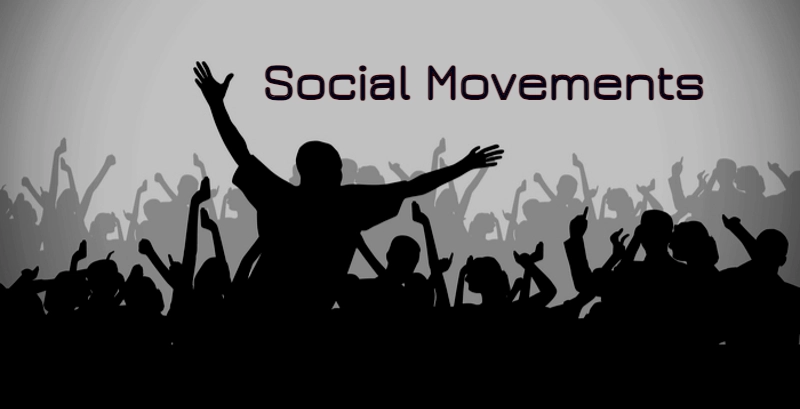What are the different types of social movements in sociology?
There are different types of social movements in sociology, including: alternative, redemptive, reactionary, self-help, reformist, and revolutionary social movements.
In this article, we will discuss social movements, types of social movements in sociology and Characteristics of social movements. So, let’s get started!

What are social movements?
A social movement is a collective political actor that plays a mobilizing role and promotes social change through actions with symbolic and identity-based content, often unconventional.
Social movements are groups of individuals who share certain identity traits (race, social class, sexual orientation) and who together challenge the dominant view of social reality.
Social movements are groups of individuals who come together to address a particular issue or to defend a shared belief or value. They can be formed around a variety of causes, including civil rights, environmental concerns, political change, and more.
Social movements in sociology are active groups, bodies or movements that seek change in society in various areas such as civil rights, gender equality, religious freedom, gay rights, environment, economy, peace and others.
A social movement seeks to put pressure on authorities, shift public opinion, and bring about changes in societal behaviors and policies. Social movements are active through social organization and various alliances to achieve their goals.
Social movements have always existed, but with different names and different political logics, and have always been the driving forces and, often, the executors of change in their societies. Major social movements in contemporary history emerged within industrial society, between the nineteenth and twentieth centuries, for example: the labor movement, the feminist movement, the hippie movement, the LGBT movement , among others.
Different Types of Social Movements
Social movements can be classified in several ways, including their ideology, goals, tactics, and level of organization. Here are some common types of social movements:
Progressive movements: These movements aim to bring about social change by challenging the status quo and defending the rights of marginalized groups. The Progressive movement was economic, political, social, and environmental reforms that brought major changes to the United States during the late 19th and early 20th centuries and addressed political corruption, poverty, exploitation and many more.
Examples include the civil rights movement, the women’s movement, and the LGBTQ+ movement.
Conservative movements: The Conservative social movements seek to preserve traditional values and oppose social change. Examples include the religious right and the Tea Party movement.
National social movements: “Nationalism” represents an important source of social and political movements. Nationalism as a political concept is based on different pillars. Cultural, linguistic, and religious considerations may constitute an important source for many nationalist movements, as is the case in France, the Middle East, and Africa. These movements usually begin with the emergence of groups of national intellectuals who seek to highlight the distinctive national character of their nationalities and attempt to give them an independent political character.
Revolutionary movements: Revolutionary social movements aim to overthrow the existing political or economic system and replace it with a new system. Examples of this are the communist movement and the anarchist movement.
Reform movements: Reformist social movements aim to bring about gradual changes in the existing system, not to overthrow it. Examples include the labor movement and the environmental movement.
Religious movements: Religion represents an important source for religious social movements. A religious movement is a group that calls for a religious thought that differs from the prevailing thought in society. Religious movements have appeared since ancient times. During the reform revolution led by Martin Luther, an extremist movement emerged with the aim of bringing about radical changes in Western society. The religious movement usually begins by criticizing the prevailing religious thought, and ends up criticizing the political system. Therefore, it is a call for change that rejects reality.
Labor movements: The working class has been an important source of many vital social movements, through labor protests against the exploitative industrial labor system, low wages, and long working hours. Labor movements played a prominent role in the field of social welfare for workers. Many of them were also the product of ideas adopted by socialist parties, which promoted the principle of equality and equal opportunities.
Radical movements: These movements aim to bring about radical change through direct action and civil disobedience. Examples include the Black Lives Matter movement and the Occupy Wall Street movement.
Each of these categories can be divided into subsections based on the specific issues the social movement focuses on.
Characteristics of social movements
Social movements are characterized by the following:
- They are collective social agents , composed of a variable number of individuals who share a certain sense of identity or a common cause related to social change.
- They have an informal character , that is, they lack a fixed structure and unique representation, and should not be confused with foundations or political parties (of a more formal nature).
- They tend to be temporary : they arise to address an issue or to demand change and, once the objective has been achieved (or not), they tend to dismantle or transform into something else. At the same time, they are more enduring and unified than a simple series of protests.
- They usually manifest themselves through mass events , street actions and calls for boycott, generally using unique slogans and logos, banners, petition signatures and other strategies to demonstrate value and social presence.
- They usually exist to address issues of a social, economic, racial, cultural, ecological or political nature , and may belong to any ideological orientation, whether revolutionary or reactionary.
- They tend to have a spontaneous or self-convened origin , lack large funding and also lack formal leadership (instead, they tend to have different spokespersons or spokespeople).
New social movements
The label of “new social movements” is still being debated by experts and sociologists. However, most of them agree that these movements arise from values and demands that go beyond economic demands. For example, this would be the case of environmentalism or pacifism.
Some of the characteristics that define new social movements are the following:
- They are not politicized nor do they follow any specific party.
- In many cases, the demands have to do with lifestyle and identity.
- The way of acting has also changed and some have a recreational purpose, such as camping.
- They are organized through assemblies and therefore have greater autonomy.
Conclusion:
Any attempt to classify the forms of social movements must take into account many factors, including: the nature of the commitment to political change and the organizational form that the movement may take, as well as the diversity and multiplicity of principles that it may adopt. Also, one social movement may take different organizational forms.
National, class, reformist, and revolutionary movements may express themselves in the form of political parties, pressure groups, or trade unions. In light of this, several forms of contemporary social movements can be referred to, such as the religious, nationalist, racist, and labor social movements.
Read Also: The Role of Sociology in Solving Social Problems





